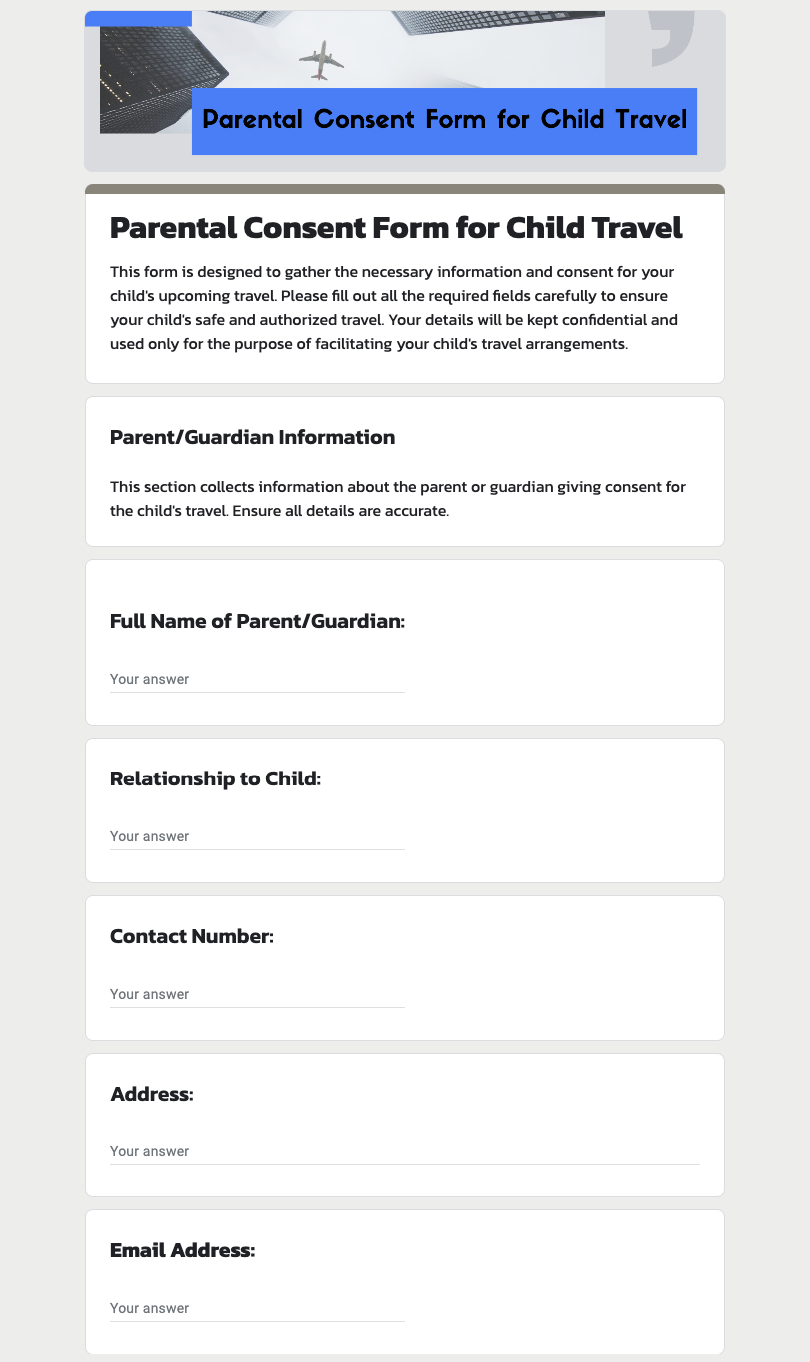Parental Consent Form for Child Travel
FREE
A Parental Consent Form for Child Travel is an essential document for parents or guardians who need to authorize their child’s travel without their direct supervision. This form ensures that the accompanying adult or travel agency has the legal permission to take the child on a trip, whether for school events, family visits, or recreational activities. It provides peace of mind by outlining travel details and emergency contacts, making it a crucial tool for safe and organized travel. Download this form for free and customize it to suit your business or personal needs, ensuring your child’s journey is secure and compliant with legal requirements.



